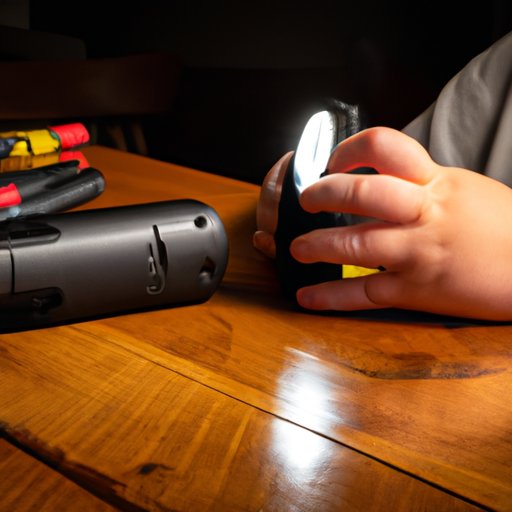Introduction
A stun gun is a non-lethal weapon used to temporarily disable an assailant or attacker from a distance. It works by delivering a high-voltage electrical current that causes pain, muscle spasms, and loss of balance. In this article, we will explore how a stun gun works, including the science behind its technology, components, effects on the body, and safety features.

The Science Behind Stun Gun Technology
At the heart of a stun gun is an electrical current. This current is typically comprised of two electrodes connected to a battery, which contains a transformer. When the user presses the trigger, the electrodes send out an electrical current with a high voltage but low amperage. The transformer increases the voltage of the current and reduces the amperage, allowing it to penetrate the skin without causing serious injury.
The electrical current works by overwhelming the muscles with energy, causing them to contract rapidly. This results in pain, muscle spasms, and loss of balance. The electrical current also affects the nervous system, interfering with the transmission of signals from the brain to the rest of the body. This causes confusion and disorientation, making it difficult for the assailant to think or move.

Exploring the Components of a Stun Gun
A stun gun is made up of several components, each of which plays an important role in how the device works. The most important component is the battery, which provides the power for the electrical current. The battery is connected to the circuitry, which controls the flow of electricity through the internal wiring. The circuitry also contains a transformer, which increases the voltage and reduces the amperage of the electrical current.
The internal wiring connects the battery and circuitry to the electrodes, which deliver the electrical current to the attacker. The electrodes are usually made of metal and have sharp points to ensure that the electrical current penetrates the skin. Finally, the device is housed in a protective casing to prevent accidental shocks.
Understanding the Effects of a Stun Gun
When a stun gun is used on an assailant, it can cause several different effects. The most common effect is intense pain, which can be debilitating and cause the assailant to drop to the ground. Additionally, the electrical current can cause muscle spasms, making it difficult for the assailant to move or stand. The electrical current also affects the nervous system, resulting in confusion and disorientation.
These effects are typically temporary and will wear off after a few minutes. However, in some cases, they can last longer if the assailant is exposed to multiple shocks. It is important to note that while a stun gun can cause pain and discomfort, it does not usually cause permanent injury or death.

Investigating the Safety Features of Stun Guns
In addition to the obvious benefits of using a stun gun, there are also several safety features designed to protect both the user and the assailant. Most stun guns have a voltage limiter, which prevents the electrical current from exceeding a certain level. This helps to ensure that the electrical current does not cause serious injury or death.
Additionally, many stun guns have an auto shutoff feature, which stops the electrical current after a certain amount of time. This helps to prevent the assailant from being exposed to too much electricity. Finally, some devices have a spark gap, which is designed to reduce the risk of accidental shock.
Conclusion
Stun guns are a non-lethal weapon used to temporarily disable an assailant or attacker from a distance. They work by delivering a high-voltage electrical current that causes pain, muscle spasms, and loss of balance. The science behind stun gun technology involves a battery, circuitry, internal wiring, and transformer. Additionally, there are several safety features designed to protect both the user and the assailant. While a stun gun can cause pain and discomfort, it does not usually cause permanent injury or death.
(Note: Is this article not meeting your expectations? Do you have knowledge or insights to share? Unlock new opportunities and expand your reach by joining our authors team. Click Registration to join us and share your expertise with our readers.)
